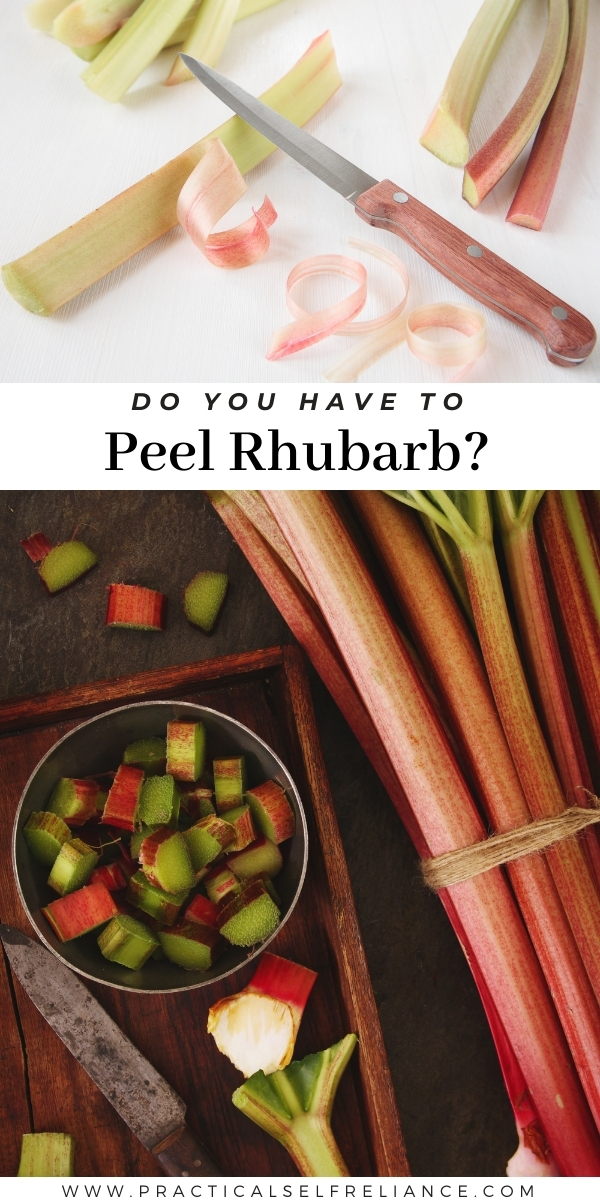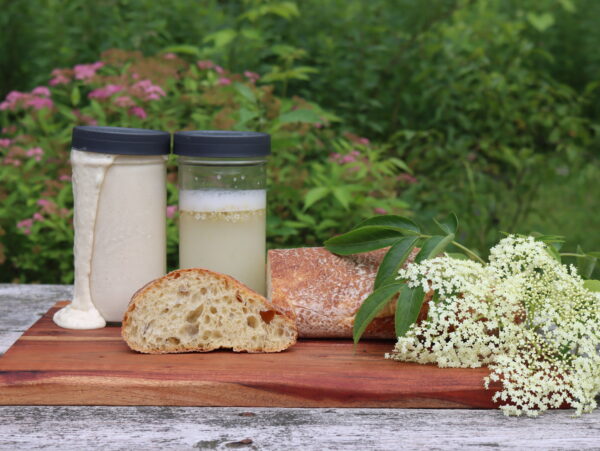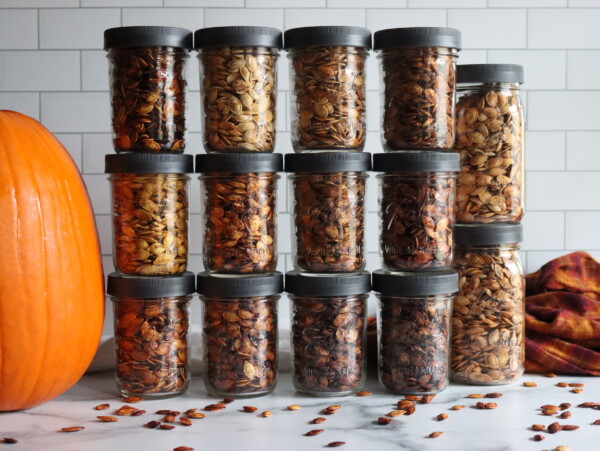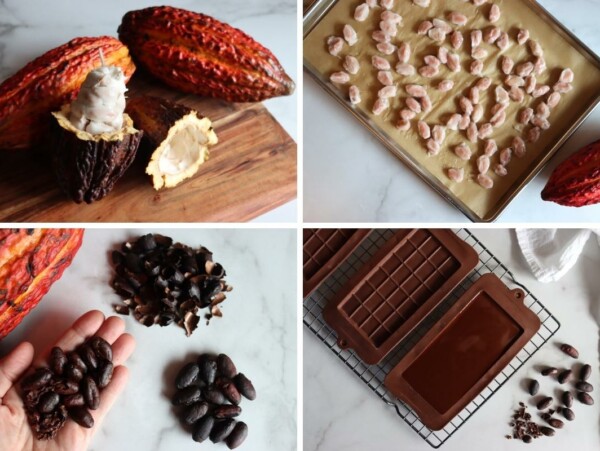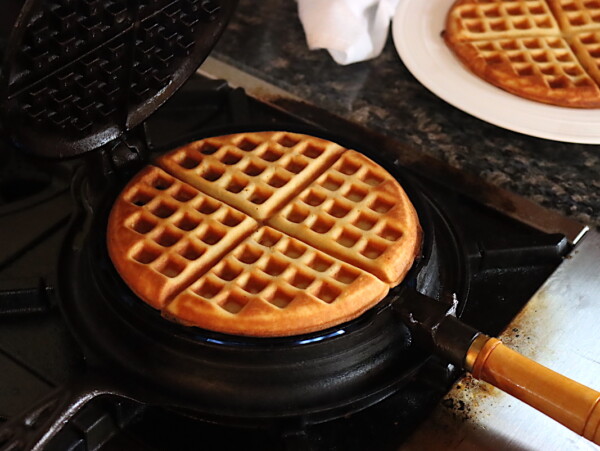Affiliate disclosure: This post may contain affiliate links. Please see our Privacy Policy.
Peeling rhubarb is often a matter of personal taste, and while many people say you don’t have to peel rhubarb, others swear that unpeeled rhubarb just isn’t worth it.
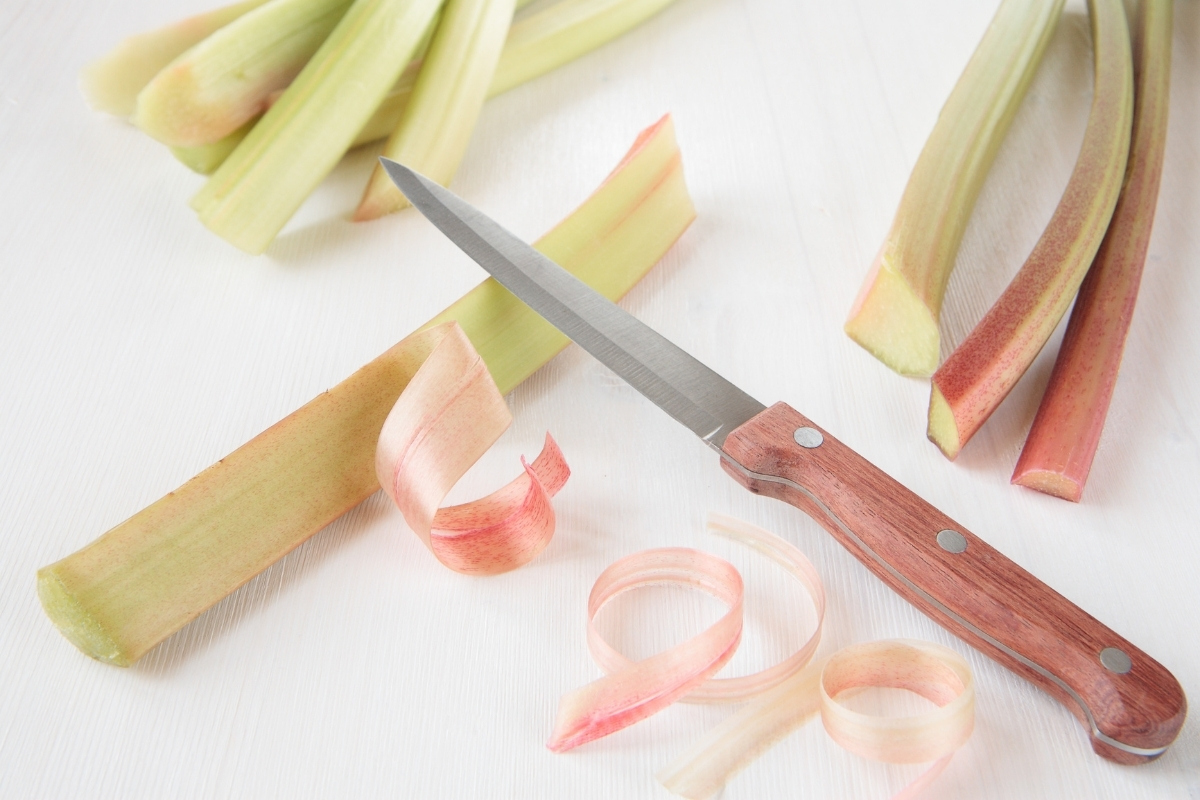
Gardeners and home cooks all seem to have their own opinions about peeling rhubarb. I almost always peel rhubarb, mostly because the peels can be stringy in recipes, especially things like rhubarb jam that want a smooth texture. It only takes a minute, and I generally find that the peel is the least tasty part of the rhubarb stalk. The inside is sweeter, and the peel tends to have more sharp astringency.
That said, there are plenty of gardeners who never peel their rhubarb, and there are good reasons for that too.
Reasons to Peel Rhubarb
There are times you’d really need to peel rhubarb, namely:
- Smooth Consistency ~ You need a very smooth consistency for your recipe. Rhubarb jam and compote always benefit from peeling rhubarb first.
- Late Season Harvest ~ Early spring rhubarb tends to have tender peels, but as the season goes on and the temperature warm, the peel gets tougher. After the first few weeks of rhubarb season, it’s usually a good idea to peel rhubarb.
- Bitter Peels ~ This really varies by rhubarb variety, but some tend to have a bitter peel. Most commercial varieties are pretty mild, so if you’re buying at the store you’re probably safe. Old-time heirlooms aren’t always so consistent, and I have a couple of plants that have bitter peels (but sweet cores) regardless of when they’re harvested. This can also be a problem if you grow rhubarb from seed since each rhubarb seedling will be different from the parent plant.
- Pesticides ~ The rhubarb was sprayed with pesticides or herbicides, or you don’t know for sure it’s organic. Generally, rhubarb is a low or no spray crop, but it’s still a good idea to peel fruits if you don’t know they’re organic.
Reasons Not to Peel Rhubarb
Other times, you should avoid peeling rhubarb for best results:
- Roasting ~ When roasting rhubarb in the oven, it’s a good idea to leave the peel on so that the stalks hold together better.
- Red Color ~ Some rhubarb is only red on the outside, and a bland yellow/green on the inside. If you’re hoping for a dramatic red presentation, you’ll need to leave the peels on for color.
- Strained Drinks & Jellies ~ You might want to leave the peels on any time you’re just using rhubarb for color and flavor, and the stalks will be strained out, as when you’re making rhubarb wine or rhubarb jelly. It’ll add a better color to the dish that way, but you’ll want to be sure to use organic rhubarb in this case.
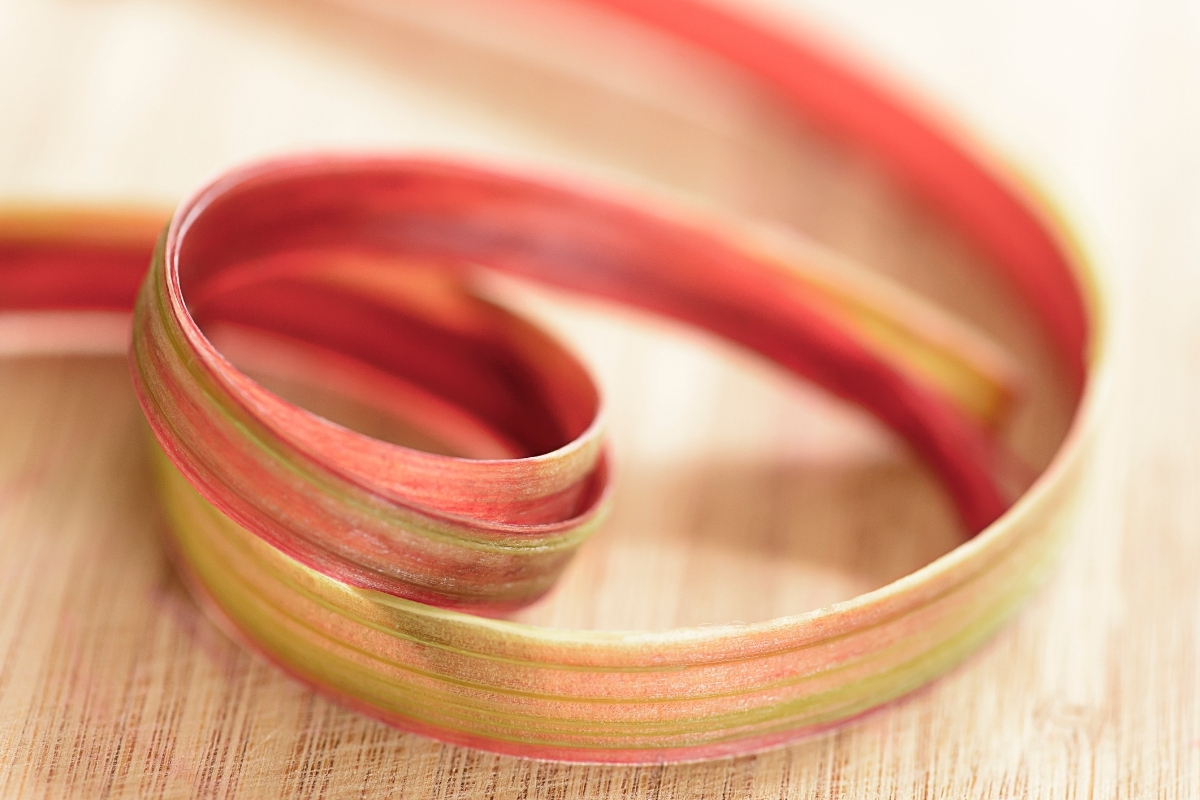
Do You Need to Peel Rhubarb?
So really, do you need to peel rhubarb? The answer is up to you.
If you think it might be sprayed with pesticides or herbicides, it’s probably a good idea. If it’s harvested late in the season after hot weather, it’s probably a good idea then too since the peel will be stringy and tough.
Beyond that, peel it if you’d like, or skip it and use rhubarb unpeeled in your favorite rhubarb recipes.
How to Peel Rhubarb
Peeling rhubarb is simple, and only takes a minute.
Start with a very sharp paring knife, and slip the knife under the skin at the end of a rhubarb stalk. The skin is very thin, but also quite tough. Looking at the end of a rhubarb stalk, you should be able to clearly see the skin as distinct from the rest of the rhubarb meat.
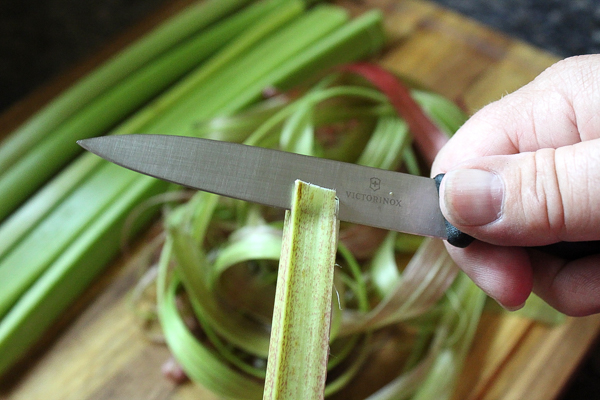
Once you’ve got your knife slipped under the edge, pin the rhubarb peel there with your thumb.
The peel should immediately begin to pull away from the stalk. Draw your knife down to keep the peel coming in one piece.
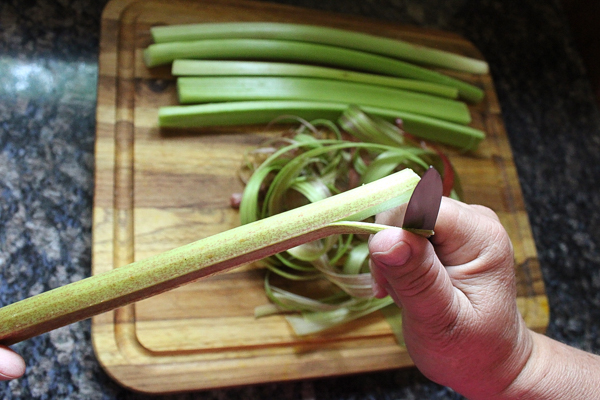
Keep pulling until you’ve worked your way all the way down the rhubarb stalk.
What’s left is a tender piece of rhubarb, without all that annoying stringiness to stick in your teeth. This is especially useful in things like stewed rhubarb, where the inner part of the rhubarb stalk disintegrates, and unless you peel them you’ll be left with long strands of a stringy tough peel.
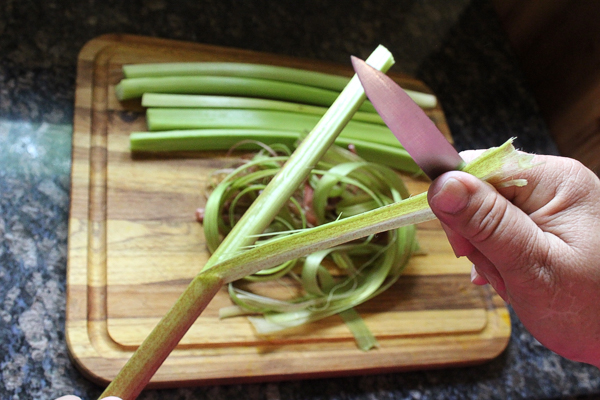
Note that some varieties of rhubarb are only red on the outside. If you want to make stunning pink baked goods, sauces, and syrups you’ll need to choose a red rhubarb variety.
There are quite a few choices available here.
Cooking Tutorials
Looking for a few more kitchen tutorials?
